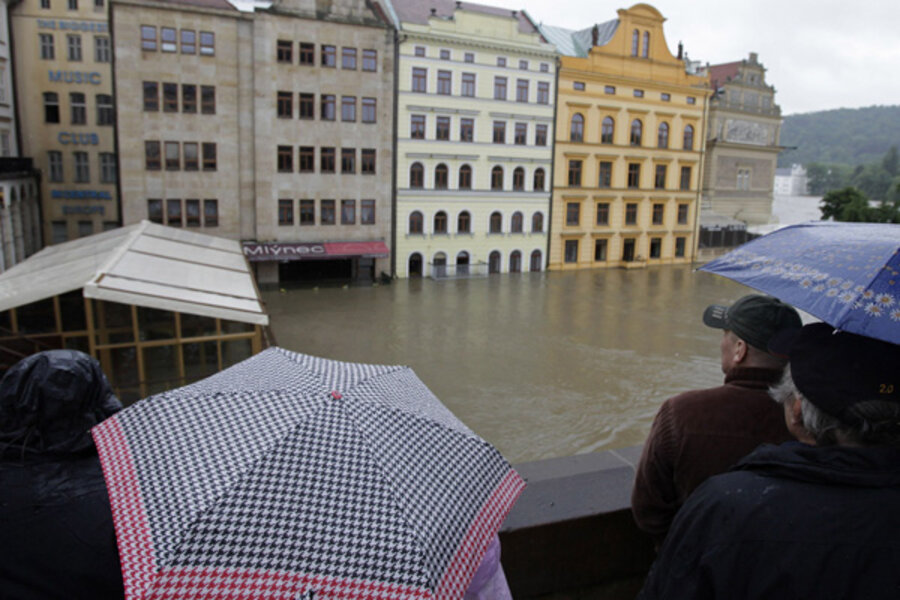Looking to lessons learned from past floods as rain drenches central Europe
Loading...
| Paris
Across swaths of central Europe, thousands have been evacuated as continuous rains and swollen rivers threaten to flood cities and towns, prompting officials to take preventive steps based on experiences from floods in 2002 that caused an estimated $26 billion in damages.
In the Czech Republic, where the 2002 flood killed 17, residents say they are taking no chances. (See this CNN piece here to recall the breadth of that tragedy.) Many parts of the capital, Prague, are under water. The country declared a state of emergency Sunday. Hundreds of soldiers have also been deployed.
The metro, heavily damaged in 2002, has been shut down and anti-flood barriers put up. Metal movable walls were erected across the Vltava river to preserve the historic parts of the capital – a defense system that was also established in the wake of last decade's flooding. In the past ten years, the government has spent an estimated 3 billion koruna ($150 million), according to The Wall Street Journal, to install the system.
Zoo animals have also been moved to higher ground, after the heartbreaking loss of an elephant and other animals trapped in their pens as flood water poured in a decade ago.
The river waters in Prague are half what they were during the massive floods of 2002, which was considered the "flood of the century," the Epoch Times reports, but precautions are still being taken.
“It will take two or three days for all the rivers to crest, so the risk still endures,” Petr Dvorak, a spokesman for the Czech state weather service, told Bloomberg news.
The old part of Prague is a UNESCO World Heritage site. Considered one of the most beautiful cities in Europe, Prague sits along the Vltava and its skyline is punctuated by palaces and towers, many of them dating back to the 14th century. One of its most iconic monuments, the Charles Bridge, remained closed Monday because of high waters.
Prague resident Jaroslav Tuma, a gallery owner whose store was six feet under water in 2002 said he is ready to move fast if need be. “I’m more worried now, even though I think the city is better prepared than a decade ago,” he told Bloomberg.
The floods are also affecting Germany, Austria, Slovakia, Hungary, and Poland. In Passau, Germany three rivers flooded the historic part of the town in the southeast part of the country. Rescue operators had to relocate residents with boats as water rises – it’s already at its highest level in 70 years. German chancellor Angela Merkel is reportedly preparing to visit the town tomorrow.
Rain is expected to ease up today, and end by midweek.








